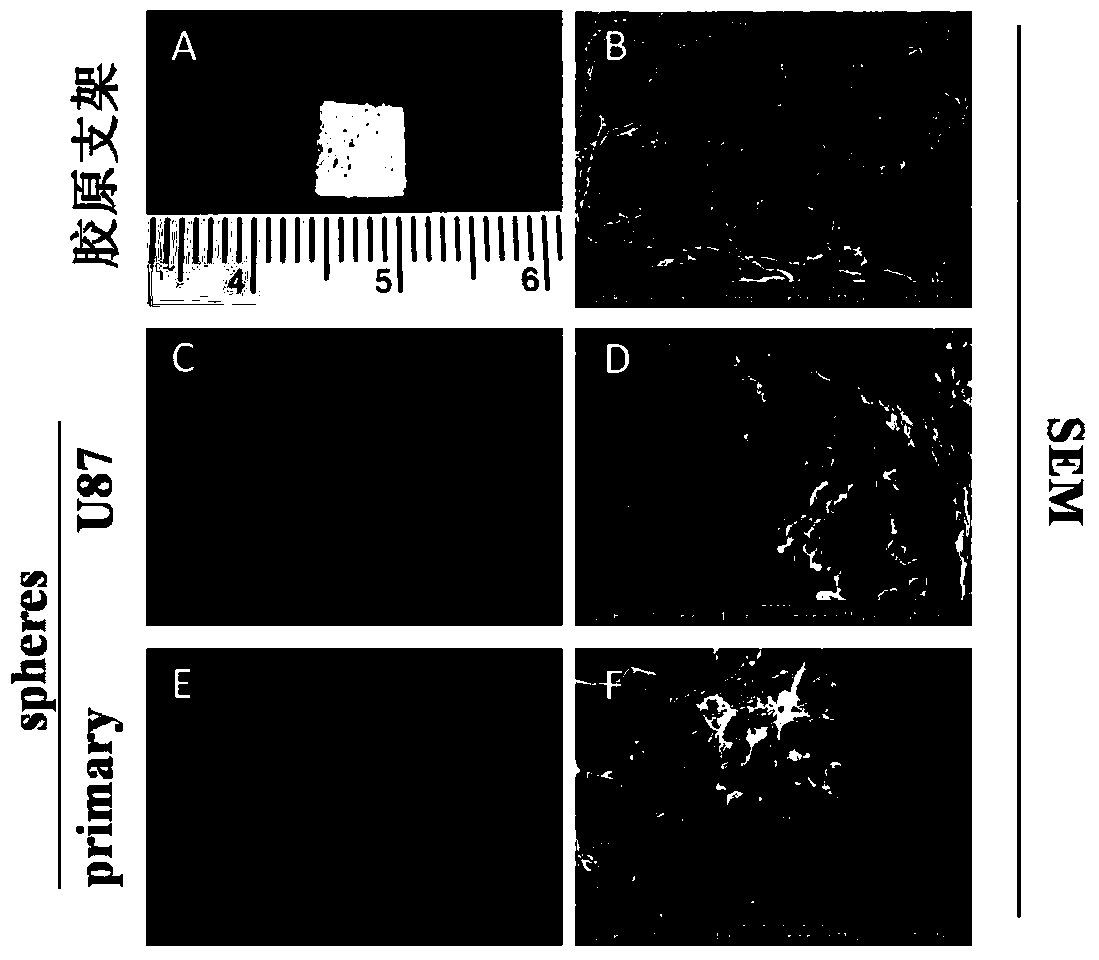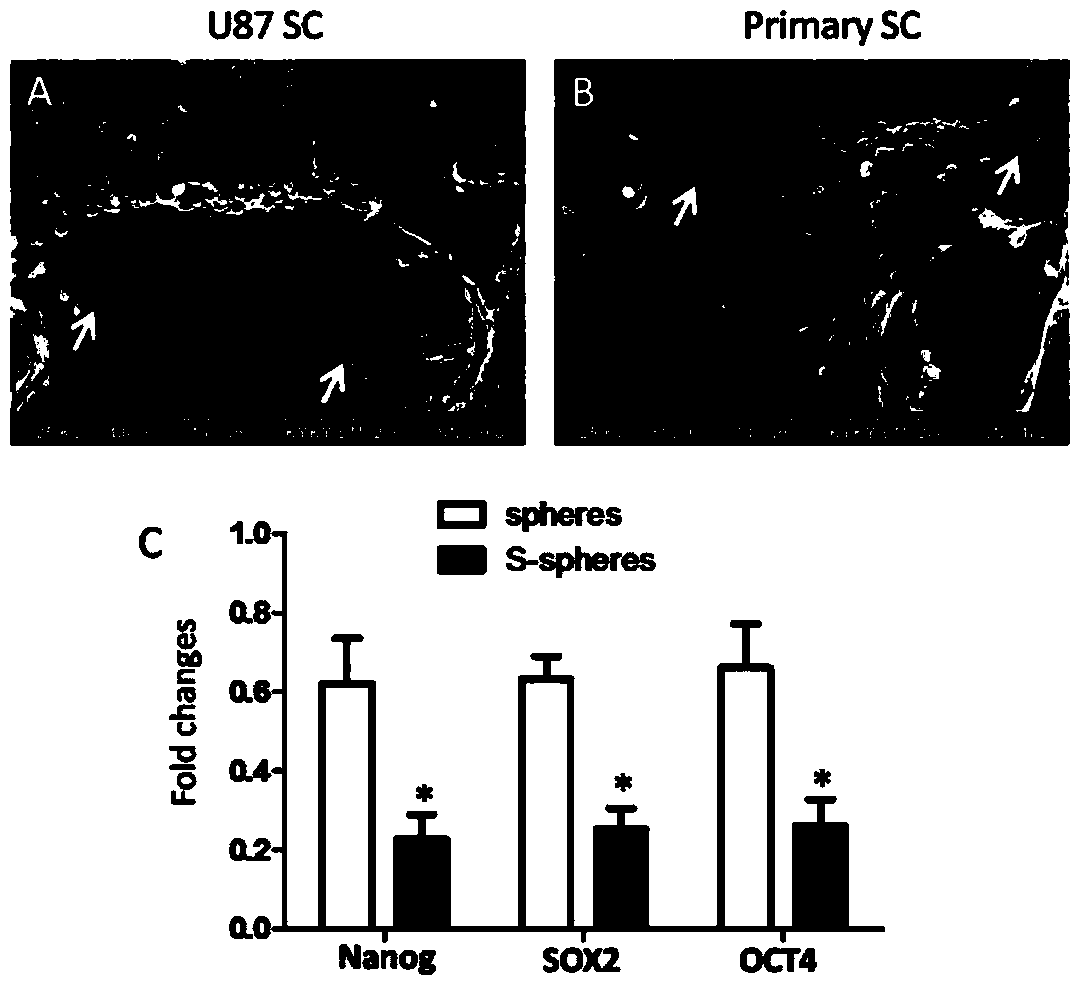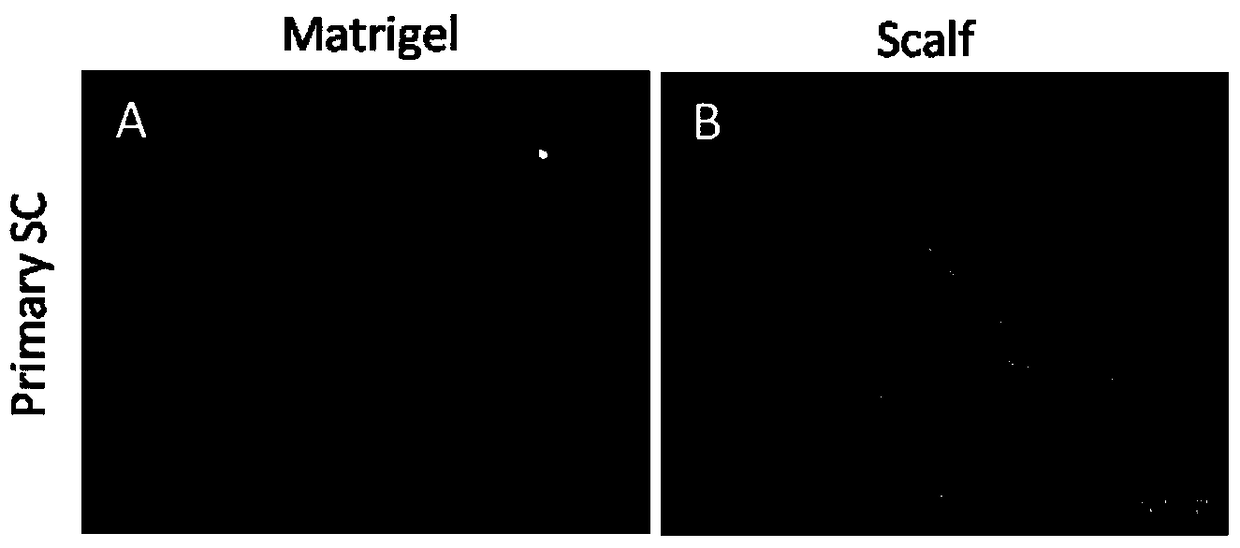A three-dimensional culture model and application of glioma stem cells in vitro
A technology of glioma stem cells and glioma cells, which is applied in the field of cell biology, can solve problems such as cell damage, Matrigel glue is not easy to dissolve, and limits the research progress of vascular mimicry in vitro, and achieves the effect of simple operation, convenient and quick use
- Summary
- Abstract
- Description
- Claims
- Application Information
AI Technical Summary
Problems solved by technology
Method used
Image
Examples
Embodiment 1
[0027] Embodiment 1 GFP-U87 and GFP-091214 sphere-forming experiment
[0028]In a 100mm petri dish, the green fluorescently labeled U87 (GFP-U87) was cultured in DMEM medium containing 10% fetal bovine serum (Gibco, 10099-133) for 3 days, and the medium in the petri dish was aspirated and discarded. Add 5ml of PBS to wash, discard, and repeat twice; add 10ml of stem cell culture medium, and then add new stem cell culture medium in a half-change method every day, and the balls can be formed in 5-7 days, and the balls of GFP-U87 can be obtained. Used for breeding and experimentation.
[0029] Green fluorescently labeled primary glioma cells 091214 (GFP-091214) were cultured according to the above method to obtain spherical GFP-091214 for passage and experiment.
Embodiment 2
[0030] Example 2 Establishment of an in vitro three-dimensional culture model of glioma stem cells
[0031] Soak the three-dimensional collagen scaffold in DMEM overnight, remove the excess DMEM adhered to the scaffold with filter paper, place the scaffold in a six-well plate, and plant the sphered GFP-U87 and GFP-091214 cells in Example 1 respectively Put it on the collagen support and let it stand in an incubator at 37°C for 4 hours, then add 5ml of stem cell culture medium to culture for 3 days, and use the GFP-U87 and GFP-091214 cell spheres cultured in the culture dish of Example 1 as a control, and observe the results with a scanning electron microscope showed that glioma stem cells grow in a three-dimensional manner within the collagen scaffold, such as figure 1 D and figure 1 As shown in F, the structure of the GFP-U87 and GFP-091214 cell spheres cultured in the culture dish is as follows figure 1 C and figure 1 Shown in E.
[0032] RT-PCR was used to detect the ex...
Embodiment 3 3
[0033] The comparison of embodiment 3 three-dimensional collagen support and Matrigel glue culture model
[0034] Soak the three-dimensional collagen scaffold in DMEM overnight, remove the excess DMEM adhered to the scaffold with filter paper, place the scaffold in a six-well plate, and inoculate the GFP-091214 cell spheres formed in Example 1 on the three-dimensional collagen scaffold and Matrigel glue, after 4 hours in a 37°C incubator and cultured in endothelial medium for 3 days, confocal laser microscopy showed that glioma stem cells formed tube-like structures on both Matrigel glue and three-dimensional scaffolds. In the three-dimensional collagen scaffold, it can be seen that the cells form a three-dimensional tube-like structure, while the tube-like structure formed by Matrigel glue is mainly formed by cell protrusions. The results are as follows image 3 shown.
PUM
 Login to View More
Login to View More Abstract
Description
Claims
Application Information
 Login to View More
Login to View More - R&D
- Intellectual Property
- Life Sciences
- Materials
- Tech Scout
- Unparalleled Data Quality
- Higher Quality Content
- 60% Fewer Hallucinations
Browse by: Latest US Patents, China's latest patents, Technical Efficacy Thesaurus, Application Domain, Technology Topic, Popular Technical Reports.
© 2025 PatSnap. All rights reserved.Legal|Privacy policy|Modern Slavery Act Transparency Statement|Sitemap|About US| Contact US: help@patsnap.com



